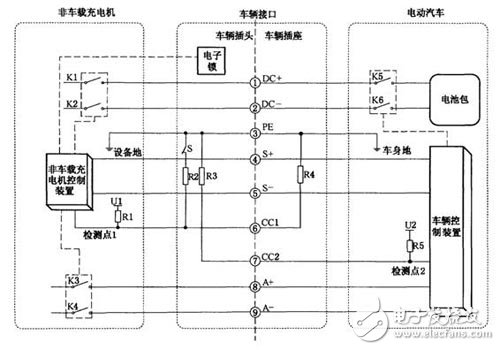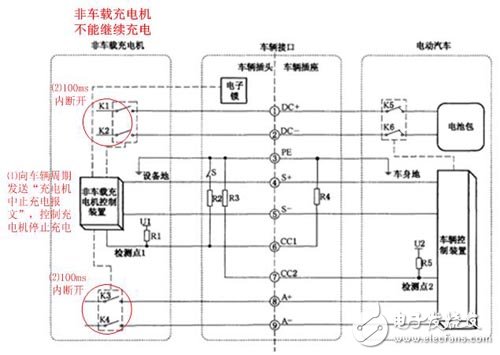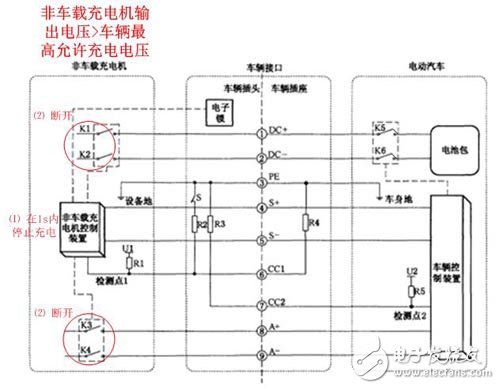Last time we talked about the normal charging process of the DC charging pile, then the problem came, what are the abnormal conditions when the DC charging pile is charged? We may wish to take a look at it to facilitate the charging of the pile system in the future.
First, let's briefly review the essence of last week, the DC charging model:

Figure 1 DC charging model
On the left is the off-board charger (ie DC charging pile), and on the right is the electric car, which are connected by the vehicle plug and socket. We can clearly see that the charging model is mainly composed of three parts: “non-vehicle chargerâ€, “vehicle interface†and “electric vehicleâ€, so the abnormal suspension of charging is basically caused by these three parts, then we will A “physical examination†analysis of these three parts.
The first type of illness: abnormal charging suspension caused by the part of the off-board charger.

Figure 2 non-vehicle charger abnormalities
1) During the charging process, if the off-board charger has a failure to continue charging (such as accidental water intake or foreign matter entering the charging pile, sudden changes in ambient temperature, etc.), send "charger stop charging message" to the vehicle cycle and Control the charger to stop charging, disconnect K1, K2, K3 and K4 within 100ms;

Figure 3 non-vehicle charger failure
2) During the charging process, if the non-vehicle charger control device has a communication timeout (such as a communication line failure, etc.), the off-board charger stops charging, and disconnects K1, K2, K5, K6 within 10s, and does not charge the vehicle. When the machine control device has 3 communication timeouts to confirm the communication interruption, the off-board charger stops charging, and disconnects K1, K2, K3, K4, K5, K6 within 10s;

Figure 4: Non-vehicle charger communication is abnormal
3) During the charging process, if the output voltage of the off-board charger is greater than the maximum allowable total charging voltage of the vehicle (such as the charging post output voltage limiting function is invalid), the off-board charger should stop charging within 1 s and disconnect K1. K2, K3, K4;

Figure 5 Off-board charger output voltage> maximum allowable charging voltage of the vehicle
Shengtian New Energy (Shenzhen)Â Co., Ltd. , https://www.stenergysolar.com